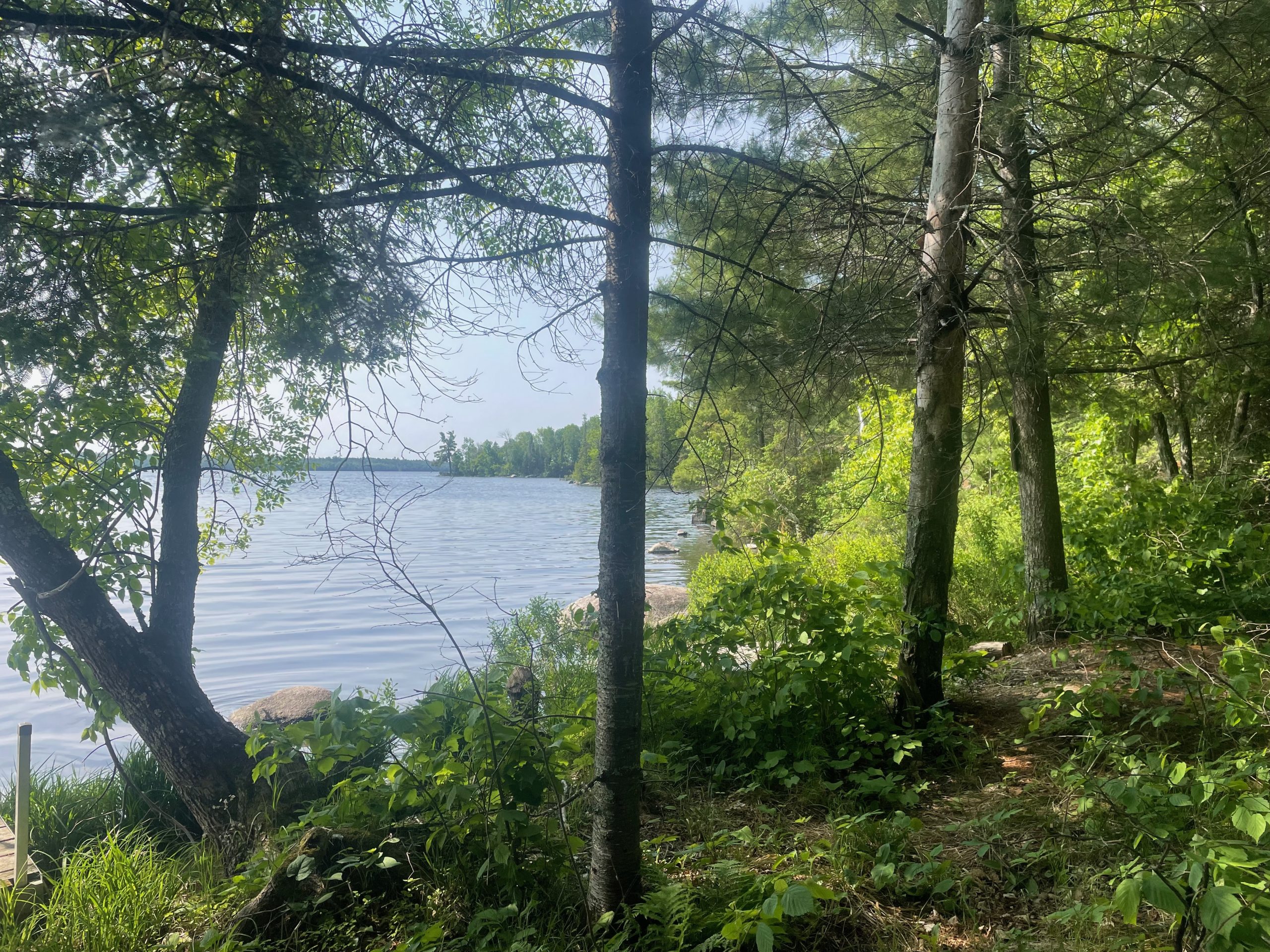
As we move through the 3rd summer of the Lake Stewardship program we want to acknowledge the work that has been done and celebrate the progress that has been made. We now have a total of 23 Lake Associations that have adopted the program through MLR, with two more joining just this week.
Each Lake Steward sign awarded means one more lot that provides clean, rather than polluted, runoff into the lake, one more lot that can provide habitat for nesting loons and waterfowl, and one more member of the community who is committed to the common good.
The results of this commitment can be realized on both large and small scales; There is almost immediate benefit to a properly maintained shoreline. Many Lake Stewards notice the increased presence of wildlife on their property as soon as their native plants come in.
Rita is a Lake Steward on Clitherall Lake. She painted me a beautiful picture of her thriving yard since she restored her 250 feet of shoreline to native grasses and forbs.
Since the planting we noticed the water quality in front of our place was much clearer than in other places where people had mowed right down to the lakeshore. Wildlife such as turtles and even loons have used my shoreline. I currently have a loon nesting platform and have had success with one or two babies each year. The variety of birds increased with all the different seed heads to feast on in the fall. The monarch butterflies also love the native flowers.
On a larger scale, Lake Steward is a framework by which social change can be achieved. The program is meant to help empower individuals to take charge of their local environment in collaboration with associations and governing bodies, and cultivate a passion for lakeshore preservation. A community with a shared commitment to stewardship makes for a healthier lake as well as a healthier network of neighbors. This kinship, realized in pursuit of a common goal, gives communities the capacity to take on larger projects and enact very important change.
I met a man named Tim at a lake association event in Chisago County several weeks ago. He and his family had recently moved to the area. He told us that the lake they had previously lived on looked like “pea soup” and he wanted to be somewhere where his family could safely enjoy the water. They chose to move to Chisago County because they saw that North Center and South Center lakes had both recently been removed from the impaired waters list by the MPCA. They inferred that the community of landowners on this lake had mobilized to make this happen. They wanted to live among people who prioritized lake health and were dedicated to maintaining it.
Indeed, years of planning and hard work on the part of a dedicated community of lakeshore property owners and the SWCD had led to this achievement. The capability and influence of this community of changemakers did not go unnoticed, and it created a powerful draw for others who are also invested in preservation. In this way, not only do these projects lead to more resilient and vibrant lakeshores, and provide ecological, and recreational benefits, they also inspire and motivate change from the ground up.
This is why we are Lake Stewards. We protect the lakes for the sake of our own personal enjoyment, and plants and animals today. We also protect the lakes for the sake of the future. We must use our knowledge of natural ecosystems and our capacity to learn from each other for the sake of our grandchildren. For something bigger and more important than our yards alone, yet dependent on them as well.
